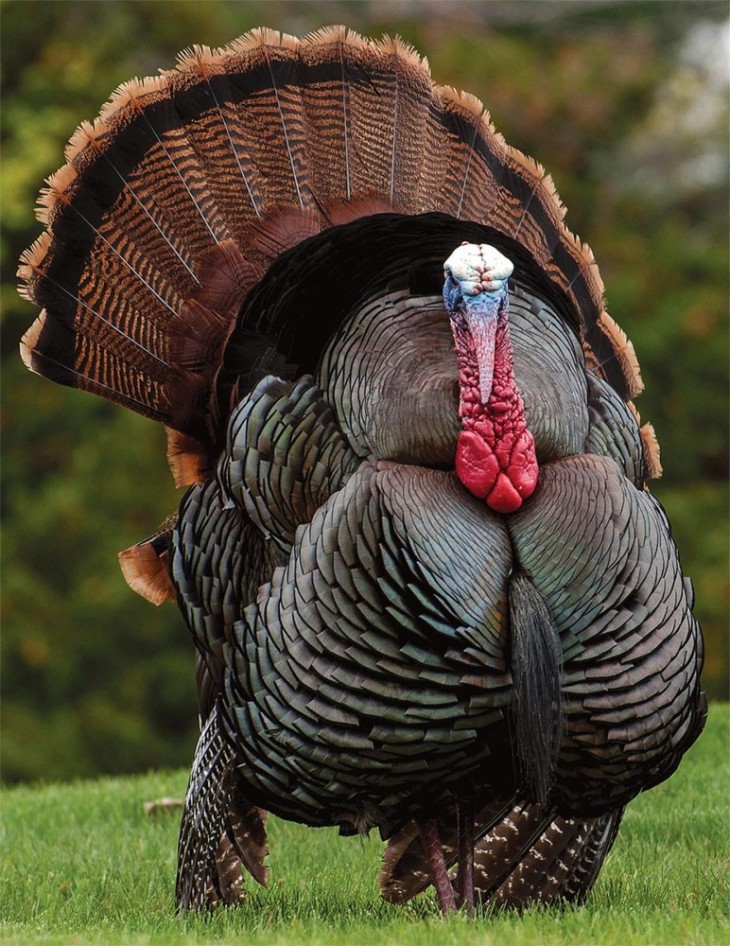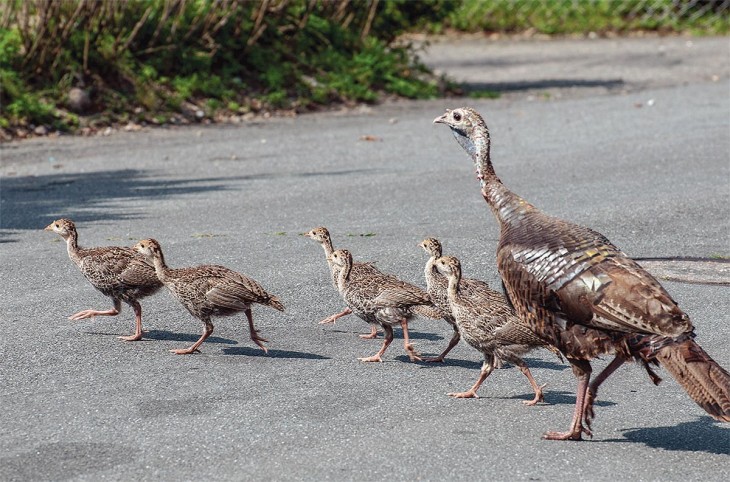During mating season, between March and May, mature male wild turkeys, also called toms and gobblers (for the loud, gurgling sound they make), strut in an effort to entice nearby hens into mating. The full strut display includes dropped wings with primary wing feathers touching the ground, tail held in a vertical position with tail feathers spread into a fan shape, and erect breast feathers. Also, notice the blue around this tom’s head, the bright red wattle, and the elongated snood – all part of the strut display.
A hen usually deposits between 10 and 15 eggs per clutch, laying one egg per day during a period of 8 to 20 days. She begins the 28 day incubation period after laying her last egg in the nest. Each egg is approximately 2 1/2 inches in length.
A hen with her surviving six poults runs across the street in an urban neighborhood in Massachusetts. There is a mortality rate of about 50 percent for wild turkey poults after hatching. They are most vulnerable for the first two months of their lives before they learn how to fly, and quickly run away from threats.
Turkeys roost each night in large trees, often white pine trees, to avoid predators. The birds spend early morning and late evening hours foraging for food, with a diet ranging from plants and insects to salamanders, frogs, and small reptiles, as well as low-hanging bird feeders.






Discussion *